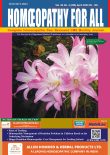Inadequate Quality Research Outputs from Homoeopathic Colleges in India: Why?
Keywords:
inadequate research outputs, career advancements, Inadequate logistic support, transportation facilitiesAbstract
Introduction
There are about 103 undergraduate and 57 postgraduate homoeopathic medical colleges in India, permitted by National Council for Homoeopathy (NCH), for admission during the sessions 2024-25 & 2025-26. Having the largest infrastructure in terms of colleges, in comparison to other countries, their contributions in the field of research are not so much encouraging. If we meticulously analyse different factors behind such inadequate research outputs, the following issues will generally come to our minds, which are discussed below. Problems related to the faculty 1 Lack of aptitude for research among faculty members There is lack of aptitude or interest for research among large number of faculty members of homoeopathic institutions. This issue can stem from various factors, including heavy workloads, lack of trainings, and a perception that research is not valued as highly as other academic duties. Addressing this issue requires institutional support, including dedicated time for research, mentorship opportunities, and recognition for research contributions. It requires motivation by the management and support from competent authorities to enhance vision for research. Due to absence of provision of incentives for conducting research and inadequate research orientation among the faculties, there is set back to research in the premises of homoeopathic colleges. 2 Lack of mandatory research publication for teaching faculty: It can lead to a decline in academic engagement and research output, potentially fostering complacency. Research publication is crucial for professional development, maintaining academic rigor, and contributing to the broader body of knowledge. But publication of research studies, not being compulsory for the teaching faculty for their promotions & career advancements, has created complacency among teaching faculty. On the other hand, demanding research publication can add undue pressure and time constraints on faculty who are already juggling with teaching, administrative duties, and other responsibilities. The "publish or perish" culture can lead to superficial research or inflated authorship, thereby potentially lowering the overall quality of research. 1.3 Inadequate teaching faculty Shortage of faculty in many homoeopathic colleges has led to increased workloads, reduced research time, and a lack of men torship opportunities for students inter ested in research. There are less number of teachers available for taking theoretical classes, imparting practical/ clinical teach ing in OPDs & IPD of hospitals & guid ing other curricular and extra-curricular activities in the campus. Faculty with in sufficient expertise can lead to a decline in research quality and productivity, impact ing both individual researchers and the in stitution. Demotivated or less experienced (in research) faculties are unable to cater to research needs of students.




